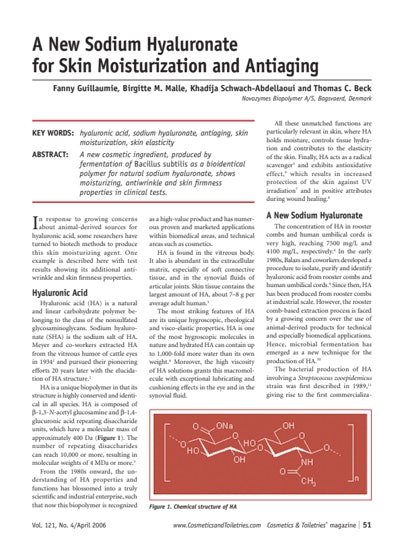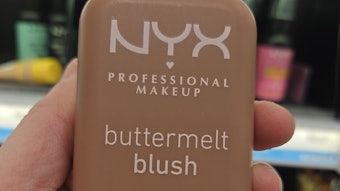
In response to growing concerns about animal-derived sources for hyaluronic acid, some researchers have turned to biotech methods to produce this skin moisturizing agent. One example is described here with test results showing its additional antiwrinkle and skin firmness properties. Hyaluronic Acid Hyaluronic acid (HA) is a natural and linear carbohydrate polymer belonging to the class of the nonsulfated glycosaminoglycans. Sodium hyaluronate (SHA) is the sodium salt of HA. Meyer and co-workers extracted HA from the vitreous humor of cattle eyes in 19341 and pursued their pioneering efforts 20 years later with the elucidation of HA structure.
HA is a unique biopolymer in that its structure is highly conserved and identical in all species. HA is composed of β-1,3-N-acetyl glucosamine and β-1,4- glucuronic acid repeating disaccharide units, which have a molecular mass of approximately 400 Da (Figure 1). The number of repeating disaccharides can reach 10,000 or more, resulting in molecular weights of 4 MDa or more.
From the 1980s onward, the understanding of HA properties and functions has blossomed into a truly scientifi c and industrial enterprise, such that now this biopolymer is recognized as a high-value product and has numerous proven and marketed applications within biomedical areas, and technical areas such as cosmetics.











